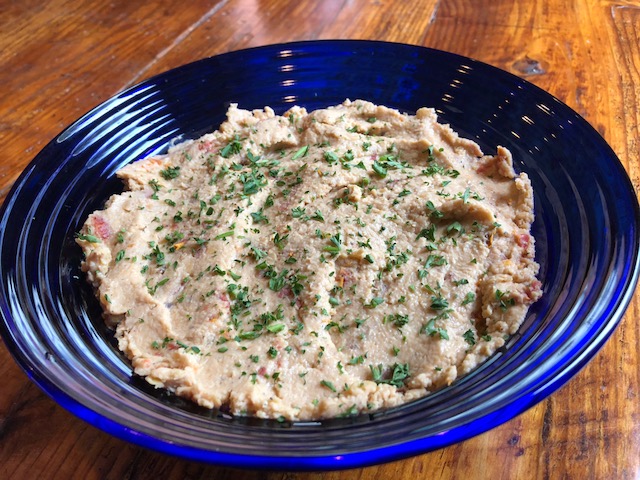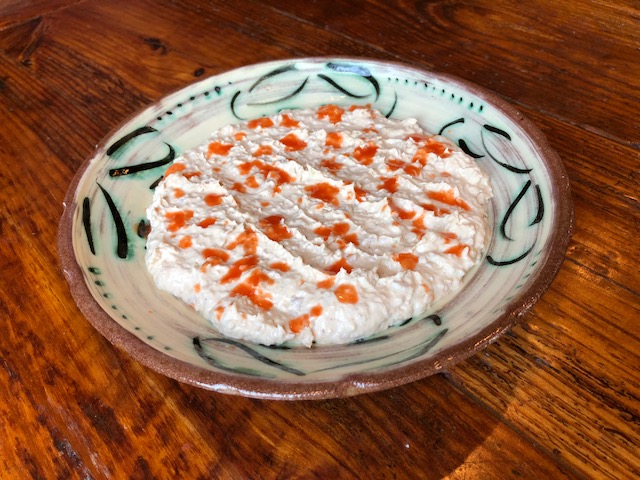,
Easy Black Bean Dip
Needing a bean dip for my
teenager cooking class recently, in which a dessert was the main dish, I
developed this recipe that would be simple and quick for the kids to make. This
is served with tortilla chips.
Makes sufficient for six
or more as an appetizer, accompanied by tortilla chips.
1 (14-ounce) can black
beans, drained and rinsed
1/2 small onion, finely
minced
1 large clove garlic,
minced
2 tablespoons chopped
cilantro leaves, plus extra for garnish, if desired
1 teaspoon lime juice
2 tablespoons olive oil
1/4 teaspoon cayenne
pepper or 1 teaspoon hot sauce
1/8 teaspoon black pepper
1/2 cup sour cream
Drain and rinse beans.
Mince onion and garlic, keeping them separate. Chop cilantro. Squeeze lime
juice.
In a frying pan, gently
fry the onion in the olive oil, stirring frequently, until softened. Stir in
garlic for one minute. Add drained beans and heat, mashing them smooth with the
back of a spoon. When hot, remove them from the heat.
Stir in the lime juice,
seasonings and sour cream. If the mixture is too thick, add a little water.
Stir in the cilantro. Taste and add salt if needed.
Serve sprinkled with a
little finely chopped cilantro, if desired.
Dip with tortilla chips.



















